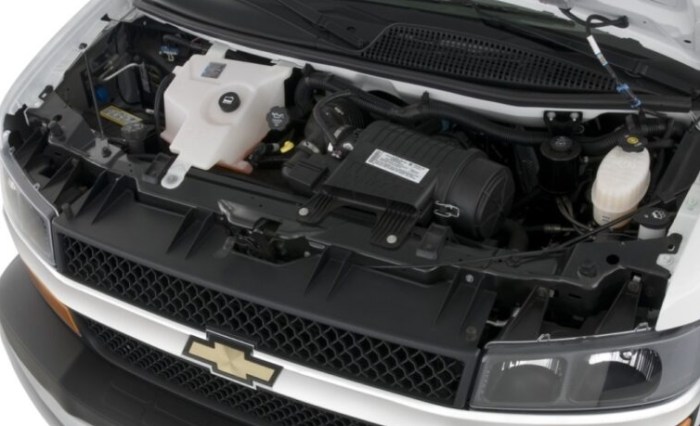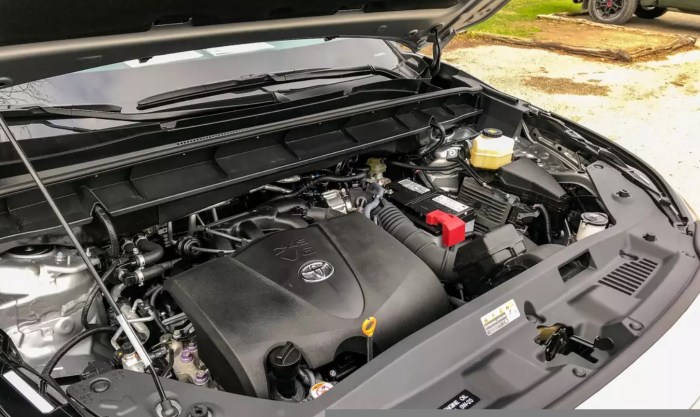High-performance engine specs 2025 set the stage for a thrilling evolution in automotive engineering, where speed and efficiency collide with cutting-edge technology. As we dive into the latest advancements, it becomes clear that high-performance engines are not just about raw power; they embody a blend of innovative materials and sophisticated designs aimed at meeting modern demands.
Obtain access to Car maintenance checklist to private resources that are additional.
The automotive industry is poised for a revolution with the introduction of next-generation engine specifications that redefine performance benchmarks. From turbocharging enhancements to new fuel efficiency standards, the engines of 2025 promise to deliver unmatched power while adhering to stricter emissions regulations, marking a significant leap forward in engine technology.
When investigating detailed guidance, check out BMW sports car with AWD now.
Overview of High-Performance Engine Specs 2025
High-performance engines are a cornerstone of modern automotive engineering, embodying the pinnacle of power, efficiency, and technology. As we approach 2025, significant advancements in engine technology are poised to redefine what is possible in terms of speed and performance. Understanding the specifications of these engines is crucial for assessing their capabilities and competitiveness in the automotive market.
Definition and Significance
High-performance engines are typically defined by their ability to produce superior power output while maintaining efficiency. These engines are essential for enthusiasts and manufacturers alike, driving innovation in performance vehicles. The latest advancements include the integration of hybrid technologies, advanced materials, and highly efficient combustion processes that collectively enhance performance metrics.
Latest Advancements in Engine Technology
The evolution of high-performance engines in 2025 focuses on several key advancements:
- Increased use of electrification and hybrid systems to boost power while reducing emissions.
- Enhanced turbocharging and supercharging technologies that optimize engine performance.
- Advanced engine management systems utilizing artificial intelligence for improved efficiency.
Importance of Engine Specifications

Engine specifications serve as a critical benchmark for assessing performance. These details provide insights into the engine’s capabilities, influencing purchasing decisions and competitive positioning. Understanding specifications such as horsepower, torque, and RPM is essential when evaluating high-performance engines.
Key Specifications of 2025 High-Performance Engines: High-performance Engine Specs 2025
The specifications that define high-performance engines are critical for understanding their potential. For 2025 models, several metrics stand out.
Critical Specifications
Key specifications for high-performance engines include:
- Horsepower: A measure of the engine’s power output, often exceeding 500 hp in premium models.
- Torque: Vital for acceleration, with figures commonly surpassing 600 lb-ft.
- RPM: Engine speeds may reach up to 8,000 RPM or higher in some models.
Fuel Efficiency Standards, High-performance engine specs 2025
As performance expectations rise, so do the fuel efficiency standards for high-performance engines in 2025. Manufacturers are striving to balance power with efficiency, leading to innovations that improve miles per gallon while maintaining performance.
Innovations in Engine Design
Innovative design elements are transforming the landscape of high-performance engines, making them more powerful, efficient, and environmentally friendly.
Innovative Materials
The use of lightweight and durable materials such as carbon fiber and advanced aluminum alloys is becoming prevalent. These materials reduce overall engine weight while enhancing structural integrity, leading to better performance.
Turbocharging and Supercharging
Turbocharging and supercharging play a pivotal role in maximizing engine performance. By forcing more air into the combustion chamber, these technologies enable engines to produce more power without significantly increasing size or weight.
Advancements in Cooling Systems
Modern cooling systems are designed to maintain optimal engine temperatures even under extreme conditions. Enhanced cooling technologies, such as liquid-cooled intercoolers and high-efficiency radiators, are crucial for sustaining performance and reliability.
Emissions Standards and Environmental Impact
As environmental concerns rise, 2025 will see stricter emissions regulations for high-performance engines.
New Emissions Regulations

Governments worldwide are implementing stringent emissions standards aimed at reducing greenhouse gases. High-performance engines must adapt to comply with these regulations without sacrificing power.
Technological Adaptations
Manufacturers are investing heavily in technology to meet emissions standards. This includes the development of exhaust after-treatment systems and more efficient combustion technologies.
Alternative Fuels
Alternative fuels, including biofuels and electricity, are increasingly being integrated into high-performance engines. These sources not only reduce emissions but also align with evolving consumer preferences.
Performance Benchmarks and Testing Methods
Evaluating high-performance engines requires rigorous performance benchmarks and testing methodologies.
Performance Benchmarks
Performance benchmarks for high-performance engines encompass:
- 0-60 mph acceleration times, often under 3 seconds for top models.
- Quarter-mile times reflecting the vehicle’s acceleration capabilities.
- Top speed capabilities that often exceed 200 mph.
Testing Methods
Accurate measurement of engine performance is achieved through various testing methods, including:
- Chassis dynamometer testing to simulate real-world driving conditions.
- Engine dynamometer testing for precise power and torque measurements.
Comparison of Testing Methods
Traditional testing methods are being enhanced with new technologies, such as telemetry and real-time data analytics, providing deeper insights into engine performance and efficiency.
Market Trends and Consumer Preferences
The development of high-performance engines is heavily influenced by current market trends and evolving consumer preferences.
Influencing Market Trends
Several market trends are shaping the future of high-performance engines:
- A growing demand for electrification in high-performance vehicles.
- Increased interest in sustainable performance solutions among consumers.
Consumer Preferences

Consumer preferences are shifting towards vehicles that offer a combination of performance and sustainability. This trend is compelling manufacturers to innovate and create engines that align with these values.
Sales Trends
Sales data for high-performance vehicles in 2025 is expected to reflect a significant increase, driven by advancements in technology and consumer interest in powerful yet environmentally friendly options.
Leading Manufacturers and Their Offerings
Several automotive manufacturers are at the forefront of producing high-performance engines in 2025.
Leading Manufacturers
The leading manufacturers known for their high-performance engine offerings include:
- Porsche: Renowned for their turbocharged flat-six engines.
- Ferrari: Known for powerful V8 and V12 engines.
- Ford: Pioneers of performance with their EcoBoost technology.
Comparative Analysis
A comparison of flagship models highlights the varying specifications and performance metrics across manufacturers, illustrating the competitive landscape of high-performance engines.
Strategies for Enhanced Performance
Manufacturers are employing innovative strategies, such as incorporating advanced materials and refining engine designs, to enhance performance and meet market demands.
Future of High-Performance Engines
Looking beyond 2025, the future of high-performance engine technology appears promising, with several anticipated trends.
Expected Trends
Anticipated trends for high-performance engine technology include:
- Increased hybridization combining electric and combustion technologies for better performance.
- Advanced software and AI integration for real-time performance optimization.
Roadmap for Innovations
Future innovations will likely focus on sustainable solutions that retain the exhilarating performance expected by consumers. This includes the development of more efficient fuel systems and advanced engine configurations.
Predictions on Consumer Demand
As consumer demand evolves, there will be a growing interest in high-performance engines that not only deliver power but also address environmental concerns. This dual focus will shape the future landscape of automotive engineering.
End of Discussion
In conclusion, the landscape of high-performance engines in 2025 is rich with innovation and opportunity. As manufacturers adapt their offerings to meet evolving consumer preferences and environmental standards, it’s evident that the future of automotive performance is being redefined. With these advancements, we can anticipate a thrilling ride ahead, where high-performance engines not only satisfy our need for speed but also embrace sustainability.